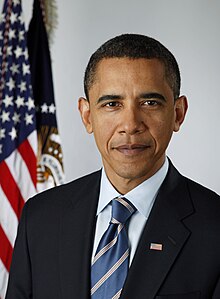US finalizes new fuel efficiency standards for autos
By RYAN TRACY
 WASHINGTON -- The Obama administration on Tuesday will make final new fuel efficiency standards for passenger cars, pickup trucks and sport-utility vehicles.
WASHINGTON -- The Obama administration on Tuesday will make final new fuel efficiency standards for passenger cars, pickup trucks and sport-utility vehicles.
The final rule will set an average fuel economy requirement of 54.5 miles per gallon by 2025 for each auto maker’s fleet, the same level the administration initially proposed in November 2011.
That standard had been expected after the Obama administration negotiated the details with auto makers and other stakeholders last year.
“These fuel standards represent the single most important step we've ever taken to reduce our dependence on foreign oil,” said President Barack Obama in a statement Tuesday.
“It'll strengthen our nation's energy security, it's good for middle-class families and it will help create an economy built to last."
Republican presidential candidate Mitt Romney has said he opposes the standards set by the Obama administration, though he has stopped short of saying he is against fuel-economy standards altogether.
Romney campaign spokeswoman Andrea Saul said last week: “Governor Romney opposes the extreme standards that President Obama has imposed, which will limit the choices available to American families.”
The administration estimated that as a result of the standards, an average family would save more than $8,000 by 2025 on fuel costs at current gasoline prices, while the cost of a vehicle would rise as much as $1,800.
The fuel savings “will more than make up for any increase in the cost of an automobile,” Transportation Secretary Ray LaHood said on a conference call with reporters.
“We are raising the bar and ensuring that Americans are preparing for fluctuations in gas prices. We are also giving manufacturers the regulatory certainty they need to build more efficient cars.”
The auto industry has favored national standards for years to avoid having to comply with different laws in different states.
But the industry’s main trade group sounded a cautionary note on Tuesday. Gloria Bergquist, vice president for public affairs at the Alliance of Automobile Manufacturers, said that the new standards would be difficult to meet without infrastructure to support them, such as electric-vehicle charging stations or refueling stations for gasoline alternatives like natural gas and more efficient diesel fuel.
“Just a mandate to build the vehicles may well fall short,” Ms. Bergquist said in an interview. “If we really want to reduce fuel use, we need to develop the fuels, the charging stations, and the technology at the same time.”
The White House said the standards include “targeted incentives” for more advanced electric vehicles, hybrids, natural-gas vehicles, and other alternative vehicles.
It left the door open to making adjustments, saying the Environmental Protection Agency and the Department of Transportation may revisit the standards after they take effect “to review their effectiveness and make any needed adjustments.”
The standards finalized Tuesday cover vehicles with model years 2017 to 2025. A separate rule boosts fleet fuel economy to 35.5 miles per gallon by the 2016 model year.
The rules will require fuel-economy improvements sooner for passenger cars, allowing more time for changes to the sport-utility vehicles and pickups.
Asian auto makers' fleets are dominated by passenger cars, while Detroit auto makers rely more heavily on pickups and SUVs for their profits.
The standards also include a limit on carbon dioxide emissions, which are linked to climate change. The EPA said the rules would reduce emissions of carbon dioxide and other so-called greenhouse gases by six billion metric tons through 2025.
“It is as though we eliminated all of our [carbon dioxide] emissions for one year,” said EPA Administrator Lisa Jackson. “It is indeed very significant.”
Environmentalists praised the standards. “Our nation will be more secure, our environment will be cleaner, and consumers will have more money in their pockets as a result of the new rule,” said Phyllis Cuttino, director of the clean energy program at the Pew Environment Group, in a statement.
Dow Jones Newswires






Comments